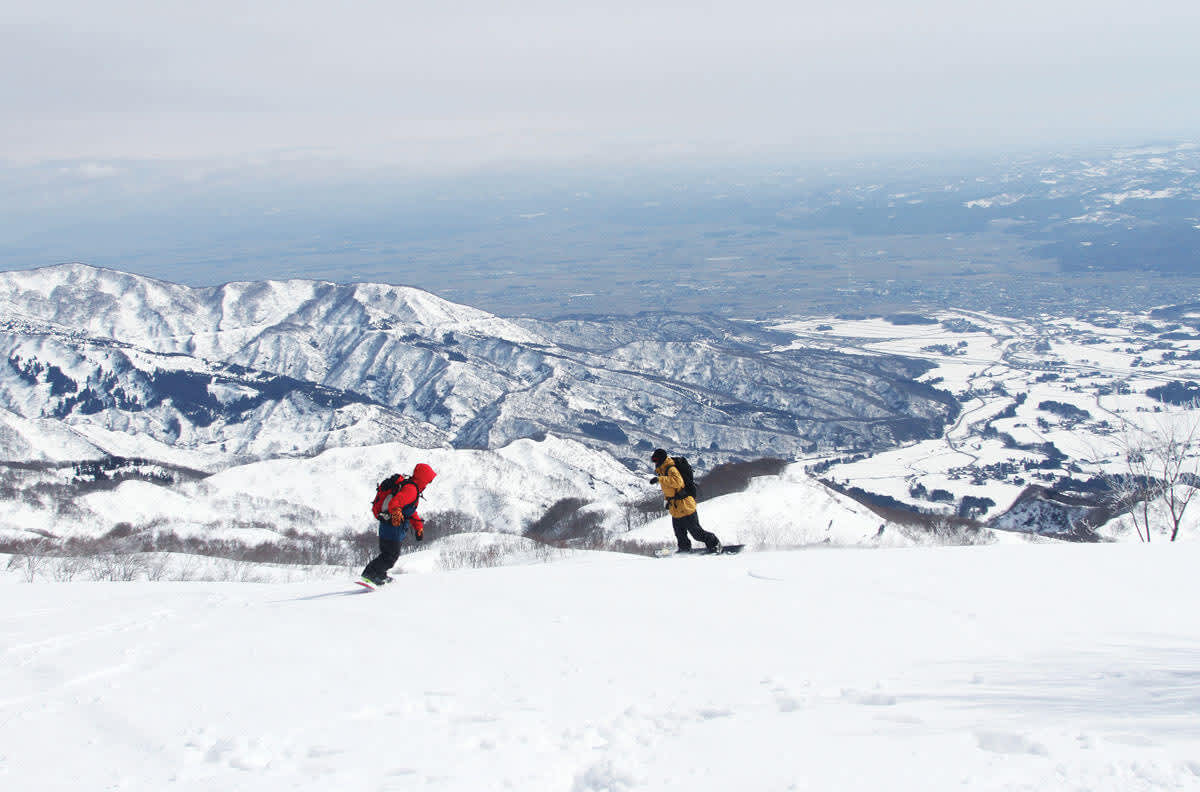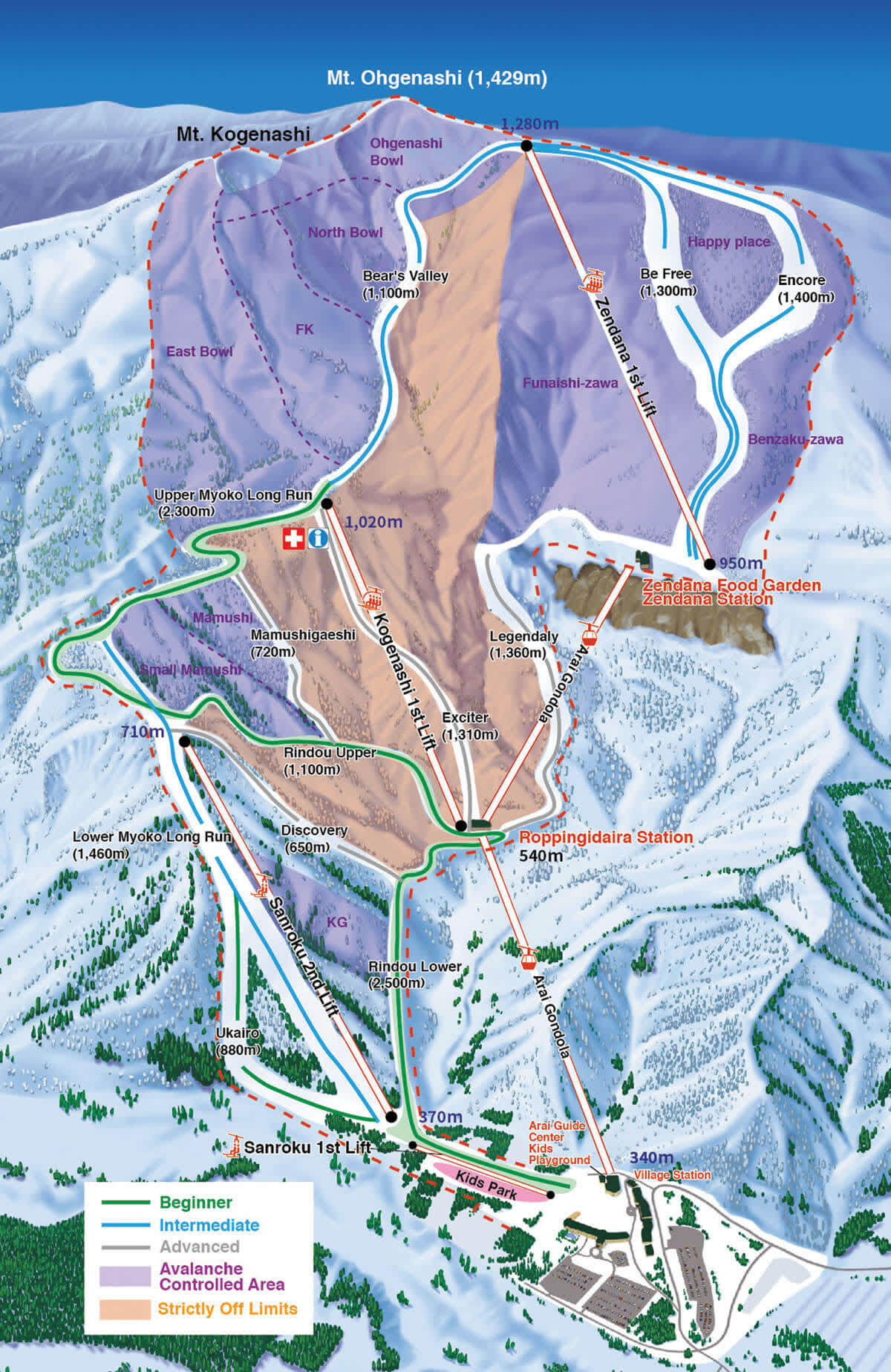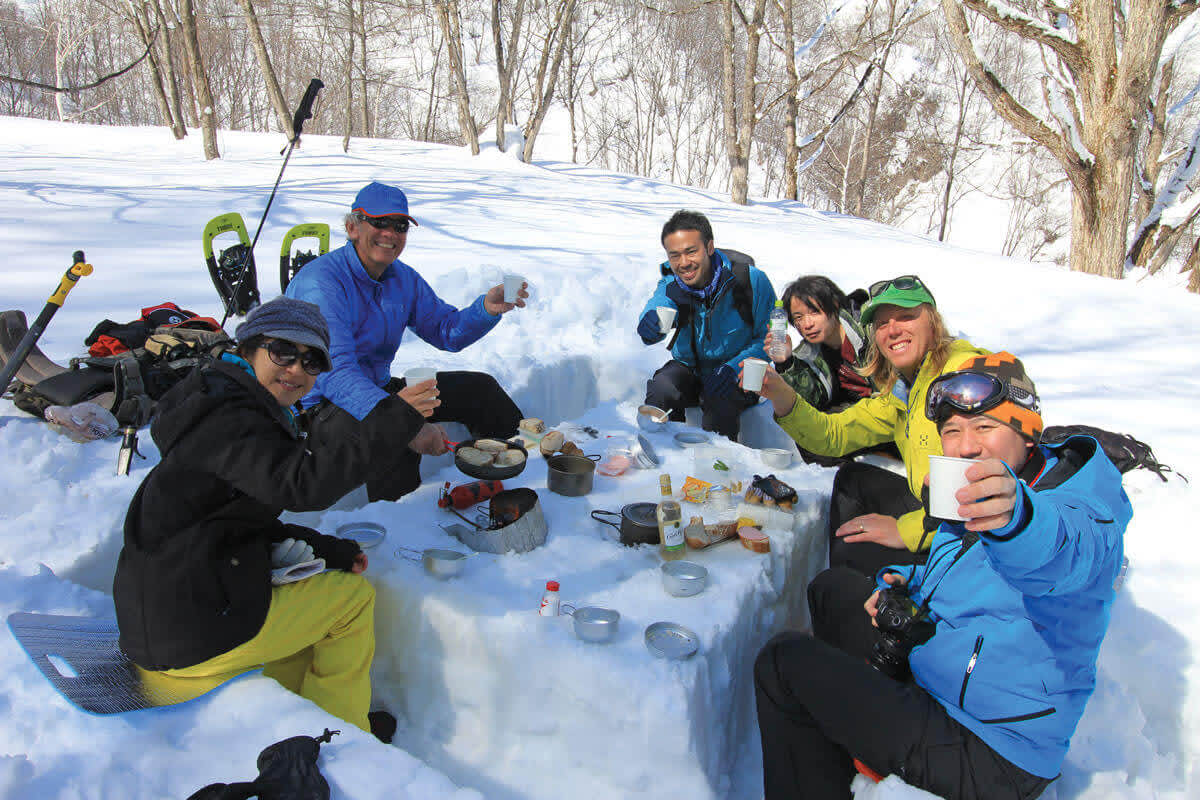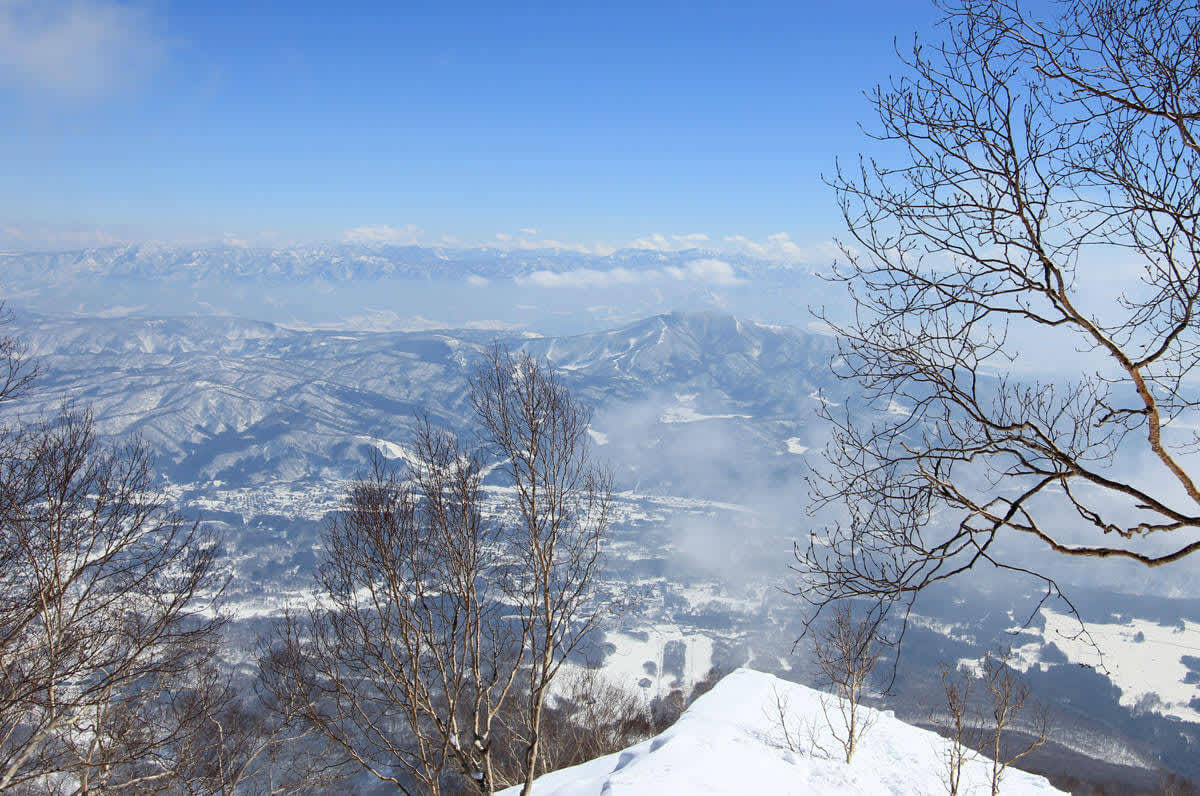Niigata and Nagano are at the historic heart of Japanese skiing, ever since it was introduced by Austrian officer Theodore von Lerch back in 1911. He would be amazed to see how snow sports have grown, and even more surprised to see he has become famous as the face of all things snow related. The friendly Lerch caricature, complete with moustache and hat, is ubiquitous, on everything from posters to popular soft toys. He is the official winter mascot for Niigata.
Von Lerch was the first European skier here, but now thousands of international visitors flock to the Japan Alps for the quality of the skiing, the great snow, and the all round experience. The main resorts of Hakuba Valley, Nozawa Onsen and Shiga Kogen are already well known to many Australian visitors, so this feature focuses on the latest addition to Japanese skiing, Arai, and the surrounding Myoko and Joetsu region.

The new Arai Resort
The biggest news in Japanese skiing this year has to be the re-opening of a legend, Arai resort near Myoko in southern Niigata, which had been closed for a decade. Set between Myoko and the coast, behind the city of Joetsu, Arai was famous for getting more snow than almost anywhere in Japan – an average of over 15 metres per season. I drove past in March and the clouds parted briefly to reveal a magnificent selection of alpine bowls and scattered trees that look absolutely perfect for powder skiing. It’s quite unlike most Japanese areas with thicker forests, which presumably is due to the relentless snowfalls from December to March.
The resort closed for lack of business – it had been relatively too far for the Tokyo market and there were very few international visitors to this region a decade ago. So the lifts were mothballed for the past 10 years, with maintenance but no skiing.
Korea’s #1 hotel company, Lotte Hotels & Resorts, purchased the area in 2015 and set about turning Arai into the premier destination that the mountain’s unique features always destined it to be. Their stated goal is to turn the resort into “Asia’s best mountain resort”, while coexisting with the natural environment.
The raw quality of the mountain gives them a good start, offering 951m vertical off the lifts, plus a hike up the ridge to Mt Ohkenashi and Mt Kokenashi adds 150m to that.

The new owners are committed to opening up a whole zone of avalanche controlled bowl terrain here. With a north easterly aspect it gets and holds a lot of great snow. Being the first range in from the Sea of Japan means the snow can be heavier than further inland, and it gets socked in weather-wise sometimes, but that also means seriously ridiculous quantities of powder.
My Japanese freeride friends who skied it back in the day rate it very highly, and are very excited about the ‘new’ Arai.

But don’t for a moment think it is only for deep powder riders. There are some long easy trails, and a perfect beginner and kid’s area out front of the ski in/ski out base hotel complex, which features 257 rooms across two wings, either Deluxe or Superior quality. Other facilities include a superb spa and indoor/outdoor onsen and pools complex, a choice of Japanese, Soba or Italian restaurants, a bakery, library cafe, bars and lounges. Non-ski family orientated activities include zip line, snow tubing and a climbing wall. The base has a food court, Salomon Station rental outlet, and there’s another food court at the gondola top station. Arai’s new International Snow Sports School is run by Japanese/Australian couple Nozomi and Tom Langtry, whose Myoko Snow Sports business is very popular.

While the new resort is certainly targeting guests looking for top quality, anyone on a tight budget can easily stay in nearby Joetsu City just 20 minutes away. Or day trip over from Myoko, which is around 30 minutes’ drive.
From Tokyo take the Hakutaka shinkansen 112 minutes to Joetsu Myoko, then it’s 20 minutes taxi or free resort shuttle to Arai.
More at http://lottearairesort.com
Myoko Kogen
Ten years ago the whole Myoko area was off the radar for most international skiers – we saw only a handful of fellow westerners on our first visit back then, and there were almost no English language signs around the little town at the base of the Akakura ski slopes. This by far the best place to stay.
There was not much aprés ski or choice of restaurants either.

Nowadays Myoko seems to be hitting a real sweet spot, with a blend of international focused businesses along the main street, including several funky bars and izakaya style pubs, while maintaining the original small Japanese ski town character. It’s a bit like Hirafu village at Niseko before the first wave of redevelopment started there 15 or so years ago.
Despite the much improved experience, Myoko remains excellent value for money and very affordable and the locals are keen to maintain the small town experience.
Sure, you could splash out on the iconic and historic Akakura Kanko Resort and Spa, which is the preferred choice for the Japanese royal family. Opened in the 1930s, it has been totally refurbished, with an incredible infinity-edge onsen as part of the spa redevelopment. But if 5-star is beyond your budget there is a wide range that includes several Australian owned lodges and plenty of cheaper hotels, some that you can ski right back to.
Mt Myoko offers a fantastic variety of skiing, with 4 bigger ski areas (Suginohara, Ikenotaira, Akakura Kanko and Akakura Onsen) offering lots of long cruising runs, some great powder lines, and good facilities, plus the small but awesome family owned Seki area.
Then there are amazing back and side-country options. The idea of back-country skiing can sound scary, and something best left only to experts, but there are some really easy routes you can try around Mt Myoko. Even better, there are combination trips available so skiers can meet up with their not so confident friends or family on snowshoes for a unique lunch in the wild. We did this in March, hiking above Suginohara for a couple of hours for amazing views – you can see as far as Mt Fuji on clear days – then skiing down through forests. We eventually popped out into a clearing where chief guide Bill Ross from Dancing Snow Myoko Outdoor Adventures had already dug out a picnic table in the snow and started heating lunch. The snowshoe members of our group were relaxing with a glass of local wine as we arrived tired but very happy from our morning hike and skiing. Bill can organise a similar snowshoe only trip, which is great fun for families.

Or for more thrills without the effort, Myoko Snowmobile Land at Suginohara has a range of 600 – 900cc snowmobiles for adults and 130cc models for kids, so this is a great family activity. They have challenging forest courses and flat runs over snow-covered rice paddies where you can really open the throttle.
Joetsu and Takada
It’s easy to catch a train or bus from Myoko the 20km into Takada and Joetsu City. This historic castle town offers sights, shopping and the chance to unleash your hidden talents in the sushi department. I don’t think Sushi Train are in any danger from my efforts, but the make-your-own-lunch sushi class at Tomizushi Takada is a lot of fun. The instructing chefs are characters, and despite my overstuffed end results the head chef gave me the sushi chef shirt and hat to keep. All you need is a minimum of 5 participants, and at JPY 3,000 plus tax it’s great value, available between 11am and 4pm. Reserve ahead of time to +81-25-523-2367 or www.tomizushi.com.
Takada Park is the site of a former castle that dates back to 1614, with the 3-storey gatehouse rebuilt inside the moat area. In spring it attracts over a million visitors to view 4,000 cherry trees in full blossom for the first two weeks of April, but it’s a relaxing stroll around in winter too only 15 minutes’ walk from the station.
For a true change of pace the old Buddhist temple at Kyuushouji in Takada offers a Zazen
meditation experience. Zazen is a part of Buddhist training, said to improve concentration and reduce stress. It’s austere – you can’t even wear socks inside the chilly temple. After skiing powder all morning at Seki I found it hard to get my legs into the correct position, but the helpful abbot provided a stool for me instead. It costs JPY 1,000 per person and reservations should ideally be made a couple of weeks prior. Email jtca@joetsu.ne.jp or call 025-543-2777.
If you self-drive there is a fantastic roadside market area between Myoko and Joetsu that offers a huge range of local seafood and other delicacies, plus great souvenir stuff.
Since the Hokuriku shinkansen opened access to this whole area has become very convenient. For example, we skied our last morning and did the sushi lunch and sightseeing before heading to Tokyo and the airport for an evening flight home. Similarly, on arrival day you can easily be skiing by late morning.
Useful links
- Backcountry tours, snowshoeing & rental gear dancingsnow.com
- Snow Sport School Akakura & Arai, guiding, tours to other resorts & rental gear myokosnowsports.com
- Snow Sport School Akakura yodelsnow.com
- Snowmobiling http://myoko-note.jp/snowmobile
- Area info http://enjoyniigata.com/en/ myoko.tv/english
*Owain Price has skied over 100 different areas in Japan over the past 15 years as Managing Editor of Snow Action Magazine. For lots more in-depth features see http://snowaction.com.au/category/snow-travel/japan/




























































